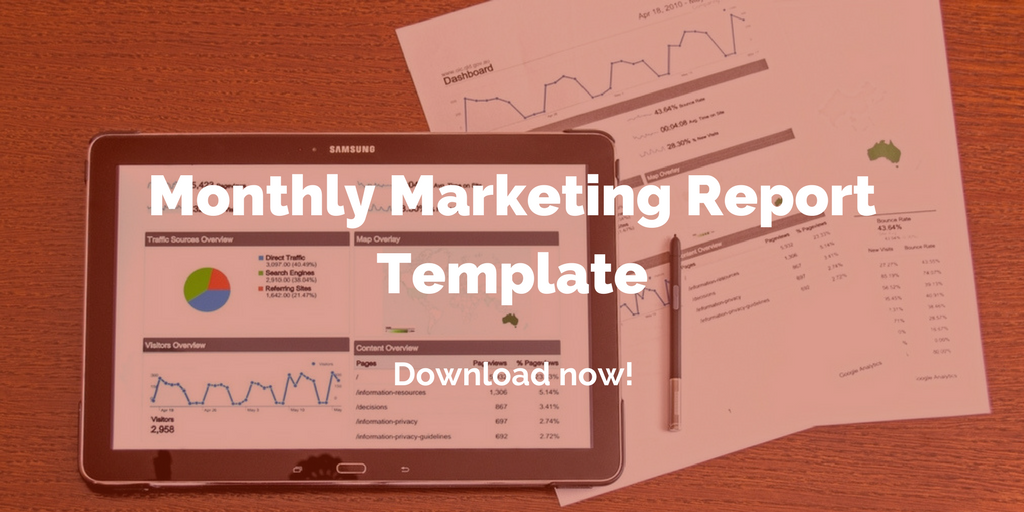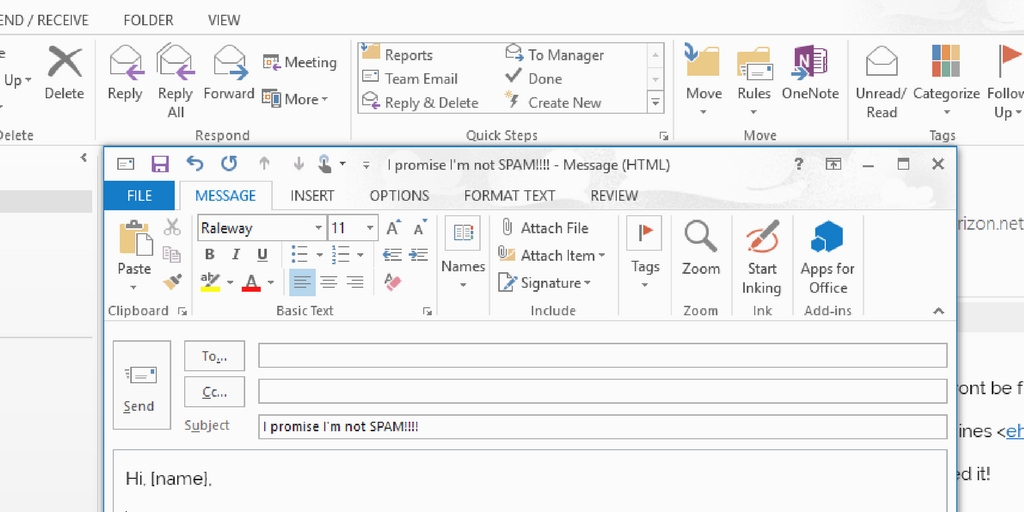
by Fronetics | Jun 8, 2017 | Blog, Content Marketing, Marketing, Social Media
Word of mouth happens organically, but these three tips will help your business get the most out of this kind of recommendation.
For as long as I can remember, I’ve been relying on friends and family for recommendations on everything from cars to coffee makers. The oldest — and perhaps the most effective — form of marketing is word of mouth (WOM). Today it’s easier than ever to research opinions on products and services through social media and review sites.
Buyers are no different. They value the opinions of peers and colleagues. In fact, B2B buyers rank it among their top three resources for information. And, in general, 82% of Americans seek recommendations when making a purchase of any kind.
It makes sense: User reviews offer an unbiased, credible experience regarding a company’s products or services. So potential customers do not have to rely exclusively on information the organization provides. What’s more, reviewers often share more than just opinions; they frequently include related tips or good-to-knows, which offer extra value for the reader.
You know buyers are out there talking about your company, so make their chatter work for you. Here are three tips to turn word-of-mouth marketing into leads.
3 ways to make word of mouth work for you
1. Identify target influencers
More and more consumers are turning to third-party reviews over brand messaging. In fact, data from MuseFind shows that 92% of consumers trust an influencer more than an advertisement or traditional celebrity endorsement.
Influencers have established credibility with their followers and the ability to sway opinions. By identifying key influencers in your sector or industry, you can begin to foster a partnership and help drive the messaging about your brand and products. Influencer marketing drives brand awareness and builds relationships with your target audience.
2. Talk about the exceptional
Social media has allowed word-of-mouth referrals to go one step further. With digital reviews, companies have a new responsibility to respond to customer comments, both good and bad. This creates an opportunity to demonstrate exceptional customer service.
Be available, be responsive, and be attentive to customers who leave comments on social media and third-party review sites. This will create a loyalty that translates into customers that care deeply about your product and are much more likely to share with their peers and coworkers. It also allows users checking your social media or third-party review sites to witness your exceptional customer service firsthand.
3. Make reviews easy
The easiest way to get people talking about your company is to give them the opportunity to do so. Seek out customer reviews on specific products or processes and share them far and wide.
One unique way of capturing this information is using a platform like Yotpo. By directly sending customers an email with a built-in review form, this company is able to collect quality feedback in the form of customer reviews or user-uploaded images. These credible experiences can be shared as a marketing tool on your website, social media platforms, and elsewhere.
B2B marketers need to be thinking about the power of word-of-mouth recommendations. There is no shortage of thoughts and opinions being shared online, so use these opportunities to your advantage.
Have some good ideas on how to utilize word-of-mouth recommendations and customer reviews? We’d love to hear them!
Related posts:

by Fronetics | Jun 7, 2017 | Blog, Content Marketing, Data/Analytics, Marketing, Social Media
Building brand awareness is one of the key benefits of content marketing, but it’s notoriously difficult to measure. Until now.
Content marketing is a long-term solution through which a business establishes a relationship with and earns the trust of target customers. It’s called building brand awareness. Drawing the public’s attention to — and heightening their knowledge of — your business ultimately generates leads that turn into sales, after all, which is the end marketing objective.
Let’s be honest: This doesn’t happen overnight. And it’s often difficult to quantify (as opposed to a vanity metric, such as website visits). But that’s not a reason to throw in the towel. There are ways to measure the work that you’re putting into your content marketing program. And, more specifically, there are ways to measure brand awareness.
4 metrics that indicate you’re building brand awareness
1) Social media reach
The reach of your social content has a direct impact on your brand awareness. The larger the reach, the larger the potential audience.
Twitter originally had an internal tool that tracked how many times a tweet had been shared, but stopped supporting this data back in 2015. So where do you go to track your social media reach?
Sharedcount is a free online tool that allows you to track the number of times a piece of content has been shared on social media, including Facebook, LinkedIn and Google. Sharedcount is an easy way to get basic information about your social reach, so you can spend less time tracking tweets and more time producing your content.
2) Brand mentions
There’s a great deal of value to be gained from monitoring discussions about your brand online. Tracking brand mentions can lead to honest feedback and objective insight from potential leads.
There are several options you can use to track brand mentions. We prefer the ease of Google Alerts, which allows you to easily set up a custom alert, or Hootsuite, where you can track brand mentions, as well as specific keywords and phrases, across all of your social media feeds.
3) Blog shares
By adding a share bar to your blog posts, you make it easy for readers to share your blog content on social networks, spreading awareness about your content and your brand through the amplifying effect of social media.
These share bars are easy to set up and even easier to monitor. By measuring your average number of shares per blog, you can track what content your users are drawn to and what pieces fall flat.
4) Search volume
One of the main sources of traffic for most websites is through simple searches. If people are searching for your company or products, that’s a pretty solid indication that they are aware of your brand.
Using online tools, such as Google Adwords or Moz, you can track the searches for your products, blogs, social media platforms, and any other variation that you find useful. These tools are free, easy to use, and perfect for determining if your company is popping up when customers are searching.
Content marketing takes time, but there are hints along the way that your efforts are working. Using these tools to measure brand awareness offers clues that customers are finding your company in their search efforts. If the needle is not moving in a positive direction, always adjust your strategy to until you find what works for your business.
Related posts:


by Fronetics | Jun 6, 2017 | Blog, Content Marketing, Marketing
If you’re committing these content marketing don’ts, you could be turning off clients and prospects instead of attracting them.
As a marketer, your job is to attract customers and prospects — so the last thing you want to do is misfire and scare people away. Yet, only a third of content marketers rate their content marketing strategy as extremely or very effective. You want — and need — to be a voice that steers a company through our ever-changing times. But even with the best intentions, you might be approaching your customers with the wrong tone, and that can cost you.
We’ve got just the plan to make sure your content is in check with what customers want. Here is our list of content marketing don’ts — our top four offenders that scare away customers.
4 content marketing don’ts
1) Don’t be generic.
Understand your audience and what makes them click. Clients want to feel special and understood in a subtle way. If a message isn’t personable and personalized, you run the risk of running customers off and disengaging them.
Create content that is audience-focused, honing in on what your audience wants to read, not what you want to tell them. Do your research and position your content marketing strategy to focus on customer and prospect needs, not yours.
2) Don’t try to sell, sell, sell.
Trying to pass your sales pitch off as content will only hurt your content marketing efforts. Readers view content that isn’t sincere, informative, or authentic as disingenuous, and they’ll quickly turn away.
The same goes for content that’s filled with excessive keywords and multiple links meant to boost SEO results. Everything should be done in moderation so the customer — and search engines — aren’t turned off.
Don’t expect your content marketing strategy to result immediately in increased dollars. Building rapport takes time with an often-delayed payout.
3) Don’t sacrifice quality.
If your content is shoddy and low quality, your clients and prospects won’t bother with it. By and large, your customers value quality, consuming content that offers value and is relevant to their lines of business.
Rather than multiple low-quality postings, stellar content that stands out and teaches readers something will go a long way. And adding a variety of media (e.g., photos, videos, slides) to posts contributes to their value and boosts credibility. Including a well-done graphic or pulling out an especially relevant quote from an expert makes each piece of content pop.
4) Don’t go unplanned.
Ensure your content is relevant by documenting a strategy, following it, and adjusting it as needed. An editorial calendar is a great place to start. (See below for a free editorial calendar template!)
Brainstorm ideas for content with colleagues and clients. Document your goals and methods and create a plan for attaining them, giving your marketing plan organizational clarity. Consistency is king — haphazard content marketing won’t get you anywhere.
Related posts:


by Fronetics | Jun 5, 2017 | Blog, Content Marketing, Marketing
Don’t risk ruining your open rates by committing these 5 email subject line crimes.
Email marketers, beware: If you’re tasked with writing compelling emails to capture online customers, the subject line — the headline of your message — is the first and main spot to grab the viewer’s attention. But, while a cleverly written subject can boost open rates and click-throughs, a poorly written one can have the opposite effect.
With this in mind, Grammarly and Movable Ink polled 1,100 readers to find out what inspired them to click open, and what they considered their biggest pet peeves when it comes to email subject lines. The results of the latter might surprise you.
Your email subject line can make or break your open rate, so don’t commit these subject line crimes.
5 common email subject line crimes
1) Spelling and grammatical errors
Proofread, proofread and proofread even more. The top reason 35% of people don’t open email is because of errors in the subject line.
Viewers who see an error in the headline assume that the rest of the email has misinformation, and they immediately disengage with its content. So whether you read the email subject line out loud (and even the rest of the email), ask someone else to read it before you hit send. Or use an online spelling/grammar program to check it for you. Just make sure you don’t have errors in the subject line.
2) Using all capital letters
It’s commonly cyber-accepted that anything typed in all capitals translates into being yelled at, and no one likes that. In fact, 24% of survey respondents said this was their biggest pet peeve when it comes to an email subject line.
Don’t mistakenly assume that hitting caps-lock for your email subject line will demand your reader’s attention — it actually does the opposite, and sends your email straight to the trash folder.
3) Excessive use of punctuation
When the email subject line is filled with exclamation points marks or other unnecessary punctuation, such as ellipses or too many commas, 17% of readers are most annoyed and deterred from looking at the message. You don’t want to be perceived as a spammer, by either the receiver’s filtering program or by the reader, so keep the extraneous punctuation to minimum.
4) Misused or broken personalization
Too often emails go out without proper formatting, or with generic placeholder fields left blank. For example, a reader who opens his or her inbox to a message with the subject line, “Hi, [name],” is sure to ditch the message — and lose any respect for the company who sent it. Make sure your email client and any dynamic content within is firing up correctly by sending a test message to yourself and a colleague.
5) Language that is too promotional
Some email subject lines use language that is over-the-top promotional, and readers don’t like it. Temper your language and don’t write subject lines that are too colloquial or filled with jargon.
What about using emojis in subject lines?
Increasingly, marketers are using emojis in subject lines. If used correctly, they may boost your open rate.
Some 56% of brands using emojis in their email subject lines report a higher unique open rate, according to data from Experian. Use of emojis can shorten your subject line, allowing an easy read on a mobile device. But, beware: Not all emojis are readable to every user, so choose wisely and always send a test first.
What bothers you most when it comes to an email subject line? Are there certain subject crimes that will prevent you from opening a marketing email?
Related posts:

by Fronetics | Jun 1, 2017 | Blog, Content Marketing, Marketing, Strategy
Today’s B2B buyer’s journey involves more research, more internet searches, and more social media.
We’ve said it before: The B2B buying process has changed, and you need to adapt. The vast amount of information available on the internet has afforded buyers a level of self-sufficiency that renders traditional sales models moot. It drives the need for new strategies, like content marketing and social media marketing.
How can supply chain and logistics businesses adjust to the new way of doing things? The latest B2B Buyer’s Survey offers insight into how B2B buyers are finding vendors, engaging with them, and — ultimately — deciding to work with one. Some of the statistics are very telling and give vendors a good idea about where they need to invest their time and money in order to get buyers’ attention
10 stats about the B2B buyer’s journey
1) Length of buying process
The B2B buying process is becoming longer and more complex because the majority of buyers (82%) are using more sources to research and evaluate products and services, and they are spending more time in the research phase itself.
2) Web search is first
62% of B2B buyers say that a web search was one of the first three resources they use to learn about a solution.
3) Online eventually
In fact, in a different study, 94% of buyers reported using online research at some point in the purchasing process.
4) Searching for what?
71% of B2B researchers start with a generic search — rather than searching for a particular company.
5) How many searches?
B2B researchers do an average of 12 searches before engaging with a specific brand’s site.
6) Self-sufficiency on the sales path
Buyers are 57% of the way down the sales path by the time they engage with a brand’s website, meaning they have already spent a fair amount of time educating themselves with the enormous amount of information available to them on the internet.
7) Social media plays a role
And content isn’t limited to your website: A vibrant social media presence helps buyers conduct their research. In fact, more than half (53%) of B2B buyers report turning to social media to make buying decisions.
8) (More than ever)
What’s more, more than a third (34%) say they are spending more time this year than last using social media to research vendors and solutions.
9) LinkedIn is B2B’s network of choice
LinkedIn is reportedly the most impactful to the research process. 81% of respondents said it was very important or somewhat important.
10) But don’t discount video
And, believe it or not, video sites like YouTube and Vimeo are playing an increasingly important role in the B2B buyer’s journey, with 60% of respondents ranking them very important or somewhat important.
Related posts:

by Fronetics | May 31, 2017 | Blog, Content Marketing, Data/Analytics, Marketing, Social Media
Analyzing the right metrics is crucial to determining whether you are achieving content marketing ROI.
We all want to see the fruits of our labors. Whether launching a product or a new social media campaign, we look for instantaneous numbers that will affirm we made the right choices. But here’s the problem: Not all metrics are created equal. Content marketing ROI is harder to confirm than checking a few quick numbers.
A spike in homepage hits may be the result of your marketing efforts, or it may be because of ghost spam. (Or, both.) Regardless, more visits do not necessarily correlate to increased revenue — just more visits. Even so, 83% of B2B enterprise companies (over 1,000 employees) use web traffic as their main metric for measuring content marketing ROI.
The number of email subscribers is another common success metric. But, again, having 100,000 email subscribers means nothing if only 0.001% are opening them. You actually could be losing money in terms of resources allocated if the emails aren’t helping drive sales. That’s why it is crucial to focus on your company’s return on investment (ROI). You could waste hours reviewing a hundred different analytics that tell you nothing about how revenue was affected by a particular effort.
Know where to allocate resources
Lean-startup pioneer Eric Reis said, “The only metrics that entrepreneurs should invest energy in collecting are those that help them make decisions.” In other words, measure the things that will tell you if an effort was profitable so you know where to put your time and money.
ROI can help you determine whether it was worth spending your resources in a particular way. This is extremely useful on platforms like blogs and social media, where things are constantly changing. Using ROI as a litmus test, you can keep experimenting and making sure you’re using these tools effectively.
According to our Social Media Use Report, 81% of respondents wanted a tracking and measuring tool to prove their ROI. Your resources are limited, so it’s crucial to evaluate your efforts with meaningful numbers that illustrate their affect on your bottom line.
So what are they best metrics to use? Here are three of our favorite tools.
3 tools for measuring content marketing ROI
1) Built-in Social Media Analytics Tools
Most social media platforms have their very own built-in tools that give you detailed information about engagement with your content. Even better, most of these tools are free. Twitter Analytics, Facebook Insight, and YouTube Analytics are just a few examples of tools you can use to measure exposure and engagement with your followers. This priceless information will help you gain a better understanding of your followers and the content they are drawn to.
2) Hootsuite
Hootsuite promotes smarter, data-driven social media marketing decisions backed by real-time analytics that allow you to spot trends as they develop and drill down for insights on how your social content is performing. It takes all your top social media platforms (Twitter, Facebook, YouTube, LinkedIn) and combines them into one application for full-scope results.
3) HubSpot
Measuring ROI through HubSpot is both accurate and convenient. HubSpot sends you weekly updates on your campaign performance and allows you to pull any reports of your own. Standard analysis includes: visits, leads, percentage changes, submissions, bounce rate, downloads, and much, much more. HubSpot Marketing Analytics can identify blog articles, landing pages, emails, and social media posts that perform well in terms of specific keywords.
Calculating ROI might take some time — both in the few extra minutes to do the math and the amount of time that needs to pass before all the data is available — but that number will be invaluable to you.
Let us help you get started. We’ve created a monthly marketing reporting template just for you. This template tracks your marketing metrics and generates graphs you can use in reporting and presentations. Click the button below to get the template (an Excel document) now.

Related posts:











